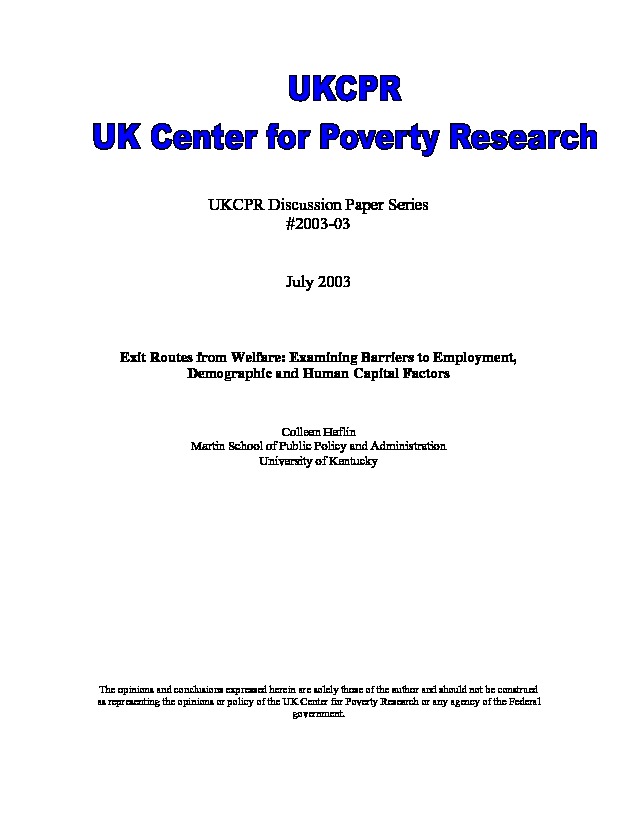This paper investigates how barriers to employment, human capital, and demographic characteristics affect women’s exit routes off welfare. Specifically, I address two questions. First, what are the avenues through which women leave welfare? Second, are mental and physical health problems, domestic violence, and lack of access to transportation, characteristics that have been ignored in other studies of welfare dynamics, associated with different welfare exit routes? Using multinomial logistic regression and data from the Women’s Employment Survey, this project examines the specific exit route chosen in detail and goes beyond general dynamics associated with welfare exit in order to capture the full heterogeneity of outcomes now witnessed in the post-Welfare Reform world. Results indicate that women with physical limitations are less likely to leave welfare either through obtaining a new job or through a non-work exit. Finally, women with transportation problems or with post-traumatic stress disorder are less likely to leave welfare through combining work and welfare.
Research
Welfare ReformPDF Thumbnail
